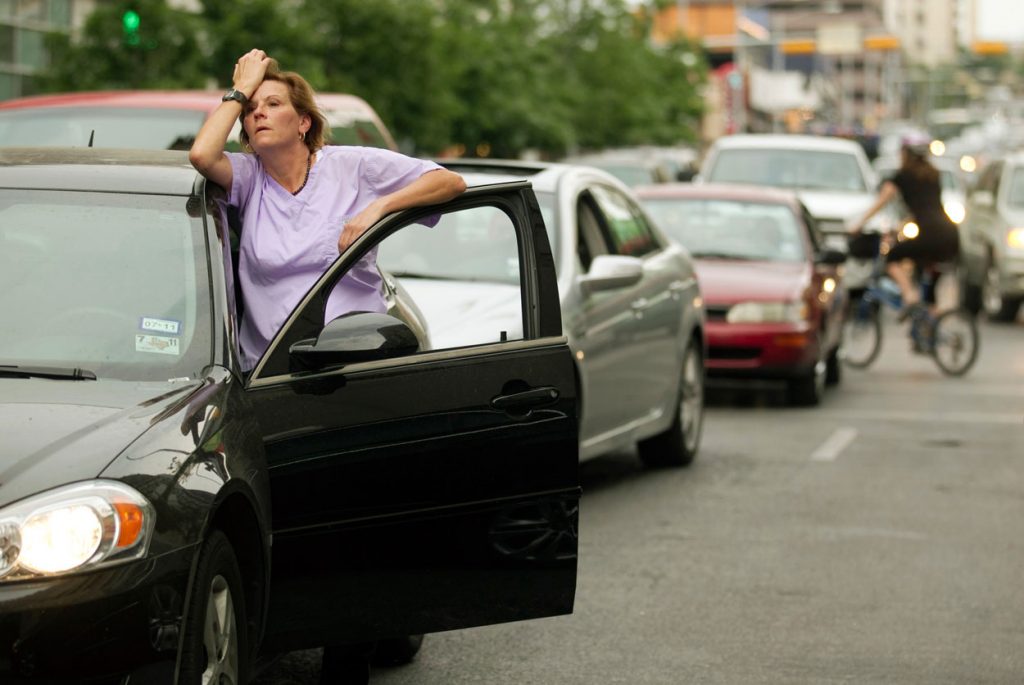A technical solution to minimise time spent in traffic
The majority of drivers are familiar with the frustration that comes with being stuck in traffic – especially when you need to be somewhere. Fortunately, the motoring world appears to share this concern, as evident by the technology that is being designed and launched to try and combat moments of gridlock on the nation’s roads.
Ford vans retailer Van Monster has analysed some of the most eye-catching developments that are either with us now, or are forthcoming:
Communicating traffic lights
German automotive manufacturer, Audi, are keen to develop their own technology that creates a line of communication between vehicles and nearby traffic lights.
Referred to as V-to-I for short, ‘vehicle-to-infrastructure’ technology could revolutionise the driving process for many drivers. This is because it allows drivers to receive up-to-date information from traffic lights about when they are going to turn green. It will also act as a means of warning motorists if they won’t have enough time to make it through the lights before they turn red.
Whilst Audi hopes that the technology allows vehicles to communicate with traffic lights, it will be far from a one-way conversation. This is because the technology will also make use of the cloud to send safety information and other operational data wirelessly from vehicles to traffic lights.
Audi is confident that the technology will help tackle congestion on the roads, as well as bring down the amount of crashes witnessed on roads.
Pom Malhotra, the General Manager of the Connected Vehicles division at Audi, commented: “This feature represents Audi’s first step in vehicle-to-infrastructure integration.
“In the future we could envision this technology integrated into vehicle navigation, start/stop functionality and can even be used to help improve traffic flow in municipalities. These improvements could lead to better overall efficiency and shorter commuting times.”
Live travel updates
In a trial led by the Transport for London (TfL), buses driving along the 344 route from Clapham Junction to Liverpool Street in London will have a digital information board fitted to the rear of the bus to deliver live traffic updates to the vehicles behind. Once activated, the boards will make use of GPS technology in order to display accurate and live traffic information, taken straight from TfL’s 24-hour traffic control centre.
Garrett Emmerson, the Chief Operation Officer for Surface Transport at TfL, acknowledged: “This innovative use of one of the capital’s most iconic features – the London bus – will help all road users.”
So far, the trial will only be tested on the 344 route. However, the TfL are looking to extend the trial across the 415 route that travels from Tulse Hill to Liverpool Street and possibly the whole of London, if the original trial is a success.
Smart cities
Technology giants, NXP and Siemens have joined forces to develop technology which could transform the way vehicles connect with one another, through the use of in-vehicle chips. Designed by NXP, the in-vehicle chips are incorporated with smart infrastructure that is being overseen by Siemens, the devices will allow vehicles to talk to each other within a city.
As a result, all of the following could soon be possible:
- The ability for traffic lights to turn green when roads are particularly busy.
- The chance for drivers to be instantly warned about any traffic jams on the road that they are travelling along.
- The opportunity for real-time information about general travel conditions to be communicated straight to vehicles and their drivers.
- The capability for drivers to be informed about any pedestrian crossings, stretches of road with lower speed limits or emergency vehicles that are nearby, via a hi-tech dashboard.
Both companies are hopeful that the new devices could be ready to launch by the year 2020. However, they have warned that cities will first need to implement the technology throughout their streets for the idea to be fully effective.
Smart motorways
A concept that has already been implemented across some of the main motorways in UK are smart motorways – technology that actively manages the flow of traffic to reduce congestion. Smart motorways are currently in operation throughout the UK, including along stretches of the M4, M5, M25 and M42. Plans are in place to introduce many more across the country. Controlled from a regional traffic control centre and the responsibility of Highways England, the idea sees traffic being carefully monitored so that vehicles have the best opportunity to flow freely along a route.
Travel along a smart motorway then, and you should be observant of these following features:
- A lane that has a red ‘X’ in the electronic signs that hangs over it shouldn’t be driven along.
- The hard shoulder — indicated by a solid white line — shouldn’t be driven along unless otherwise directed to do so.
- The smart motorway’s current speed limit will be indicated by gantries and should be kept to. The speed limit will change depending on the amount of traffic.
- Refuge areas should be used for emergencies at times when drivers can travel along the hard shoulder.

